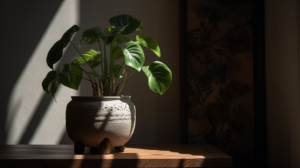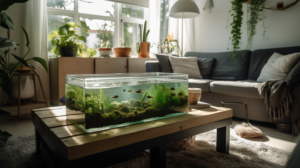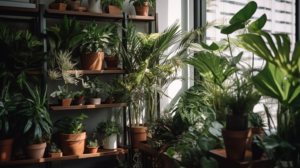A Comprehensive Guide to Indoor Edible Gardens
Growing Fresh Herbs, Vegetables, and Fruits at Home
Transform your living space into a thriving, green oasis by cultivating an indoor edible garden. Growing fresh herbs, vegetables, and fruits at home not only enhances your home’s aesthetics but also offers numerous health and environmental benefits. In this guide, we’ll walk you through the essential steps to create a successful indoor garden, ensuring you have a bountiful harvest all year round.
Choosing the Right Edible Plants for Your Indoor Garden
When planning your indoor edible garden, consider the following types of plants that thrive indoors:
- Herbs: Basil, parsley, cilantro, mint, chives, and oregano are all popular choices for indoor herb gardens, providing fresh flavor to your dishes.
- Leafy Greens: Spinach, kale, and various types of lettuce can be grown indoors, supplying you with nutrient-rich greens for salads and smoothies.
- Vegetables: Cherry tomatoes, peppers, and dwarf varieties of eggplant and cucumber can be grown indoors, adding variety to your homegrown produce.
- Fruits: Small fruit trees, such as dwarf lemon or lime, and berry plants, like strawberries, can be grown in containers, providing fresh fruit for snacking and baking.
Selecting the Right Planters for Your Indoor Edible Garden
To grow healthy and productive plants, choose suitable planters that provide adequate space, drainage, and support. Here are some options:
- Traditional pots and containers: Ensure they have drainage holes and are large enough to accommodate the mature size of the plants. Use high-quality potting soil for optimal growth.
- Vertical garden systems: Maximize vertical space with hanging planters, wall-mounted planters, or trellises. This is especially useful for those with limited indoor space.
- Window boxes: If you have a sunny windowsill, consider window boxes as a space-saving solution for growing herbs and small vegetables.
- Hydroponic systems: These soilless growing systems provide plants with nutrients through water, allowing for faster growth and less mess. They can be simple DIY setups or more advanced commercial systems.
Lighting Considerations for Your Indoor Edible Garden
Proper lighting is essential for the growth and productivity of your indoor edible garden. Most herbs, vegetables, and fruits require at least 6-8 hours of sunlight per day. If you lack adequate natural light, consider supplementing with artificial lighting:
- Fluorescent lights: These energy-efficient lights provide a broad spectrum of light, suitable for most edible plants.
- LED grow lights: These lights offer an adjustable spectrum, allowing you to tailor the light to your plants’ specific needs. They also produce less heat, making them ideal for indoor gardens.
- Ready-made planters with grow lights: Some planters come with built-in grow lights, making it easy to provide the right amount of light for your plants. These systems can be a convenient solution for those new to indoor gardening or with limited space.
Caring for Different Types of Edible Plants in Your Indoor Garden
Each type of edible plant has its specific care requirements. Here are some general guidelines for taking care of herbs, vegetables, and fruits in your indoor garden:
- Herbs: Most herbs prefer well-draining soil and consistent moisture. Be sure not to overwater, as this can lead to root rot. Pinch off the tips of your herbs to encourage bushy growth and regular harvesting to keep them productive.
- Leafy Greens: Greens require a nutrient-rich potting mix and consistent watering. Harvest outer leaves as they mature to encourage continuous growth.
- Vegetables: Vegetables need well-draining soil and regular watering. Pollination may be required for fruiting vegetables like tomatoes and peppers, which can be done manually with a small brush or by shaking the plants gently to distribute pollen.
- Fruits: Fruit trees and berry plants require well-draining soil, regular watering, and occasional pruning to maintain a compact shape. Ensure that your fruiting plants receive adequate light for fruit production.
Recommended Products for Your Indoor Edible Garden
Here are some popular products to help you create a successful indoor edible garden:
- Self-watering planters: These planters help maintain consistent moisture levels, reducing the risk of over or under-watering your plants.
- Organic potting mix: A high-quality, organic potting mix will provide your plants with the nutrients they need for optimal growth.
- LED grow lights: Ensure your plants receive the right amount of light, even in areas with limited natural sunlight.
- Hydroponic systems: Consider investing in a hydroponic system for faster growth and cleaner indoor gardening.
With the right knowledge, tools, and care, you can successfully cultivate a flourishing indoor edible garden. Enjoy the countless benefits of growing your own fresh herbs, vegetables, and fruits at home and take pride in your green accomplishments.
Edible Indoor Gardening FAQs
1. Can I grow root vegetables indoors?
2. How do I control pests in my indoor edible garden?
3. Do I need to fertilize my indoor edible plants?
4. How can I increase humidity for my indoor edible garden?
5. What are the benefits of having an indoor edible garden?
Related Articles


